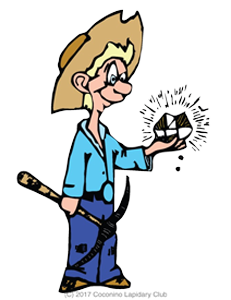This is the first of two Blogs on native silver. In the first I will introduce the mineral, including a gallery of specimens, and in the following blog, “Ancient Silver Jewelry” I’ll present examples of ancient silver jewelry, coinage, and art works, which demonstrate the innovative artisanship of early silversmiths from varied locations around the. . . Read More
Silver
Native Silver – Part I
Silver Part II – A Gallery of Silver Jewelry
This gallery of beautiful silver jewelry, coinage, and art works presents works from around the world, and spanning the ages from the 26th Dynasty of Egypt (664-525 BC) to the Art Deco Era (1909-1941 AD) [Ref 1, 2]. Works have been chosen to demonstrate the artisan’s methods of forming shapes in silver [Ref 3] by. . . Read More
USE OF COLOR IN MINERAL IDENTIFICATION
In some minerals color is directly related to a metallic element, is characteristic, and can be useful in identification. As examples, azurite as shown in Figure 1A, is always blue due to the presence of copper, and rhodochrosite, shown in Figure 1B, is always pink to red due to the presence of manganese,. However minerals such as fluorite, colorless in it self, can be yellow, blue, purple, or green due to low concentrations of metal impurities.
Gold III – Lost Gold Mines in the Southwest
Tales of the discovery and loss of rich gold mines such as The Lost Dutchman in the Superstition Mountains of Arizona and the El Naranjal lost gold mine in the Sierra Mountains of Mexico, as popularized by folklorist, J. Frank Dobie, in “Apache Gold and Yaqui Silver” have fascinated many of us. An extensive list. . . Read More
Silver Part II – A Gallery of Silver Jewelry
This gallery of beautiful silver jewelry, coinage, and art works presents works from around the world, and spanning the ages from the 26th Dynasty of Egypt (664-525 BC) to the Art Deco Era (1909-1941 AD) [Ref 1, 2]. Works have been chosen to demonstrate the artisan’s methods of forming shapes in silver [Ref 3] by. . . Read More
Native Silver – Part I
This is the first of two Blogs on native silver. In the first I will introduce the mineral, including a gallery of specimens, and in the following blog, “Ancient Silver Jewelry” I’ll present examples of ancient silver jewelry, coinage, and art works, which demonstrate the innovative artisanship of early silversmiths from varied locations around the. . . Read More
